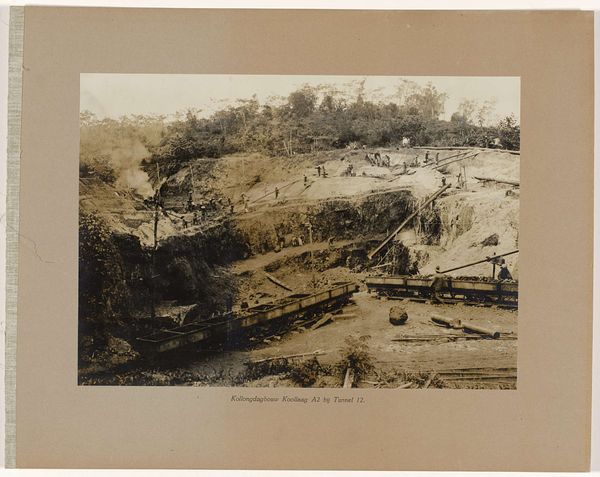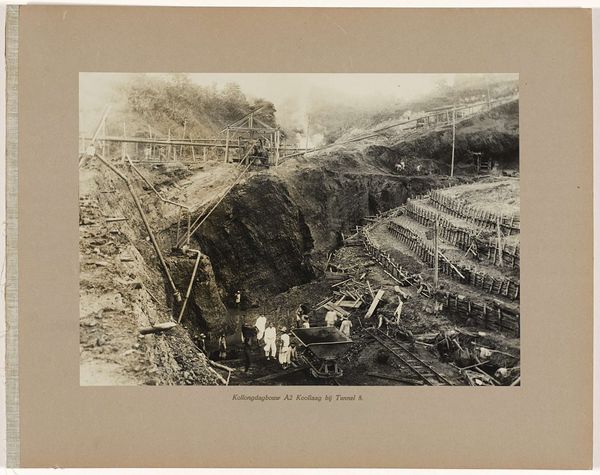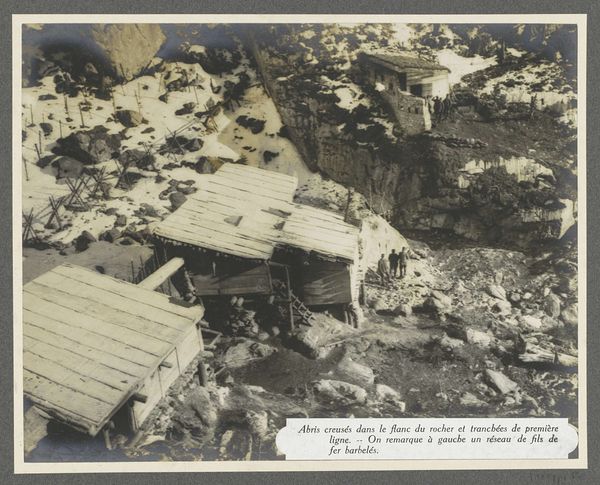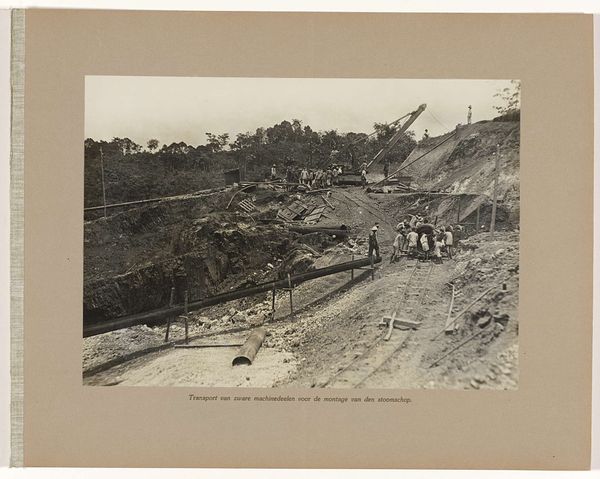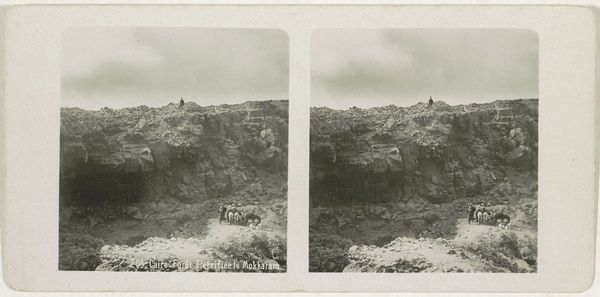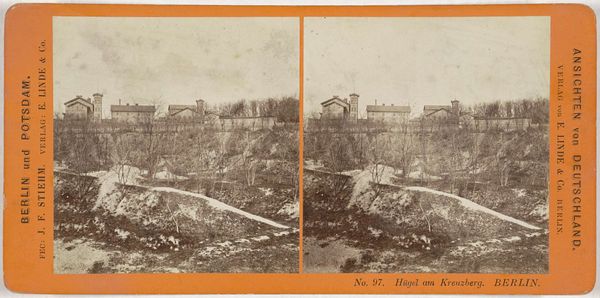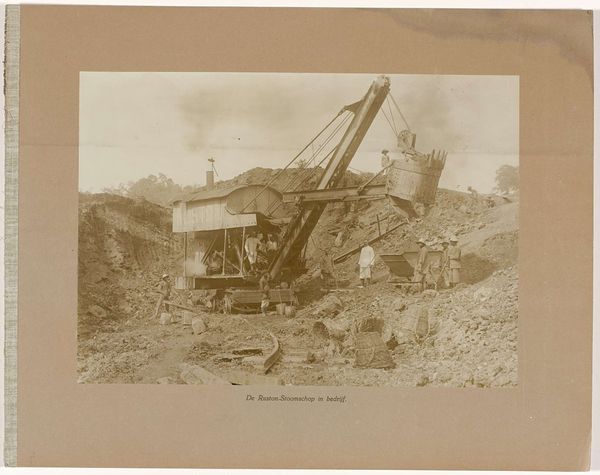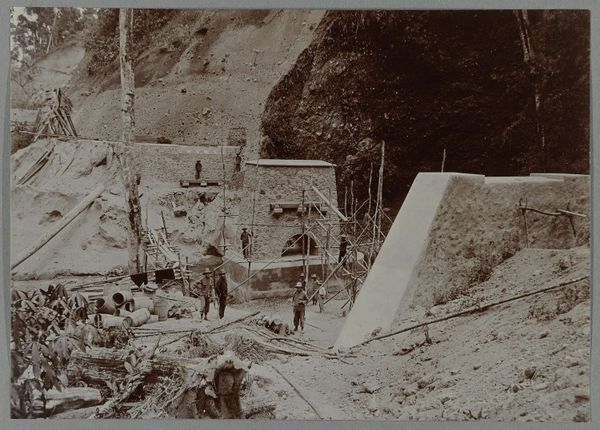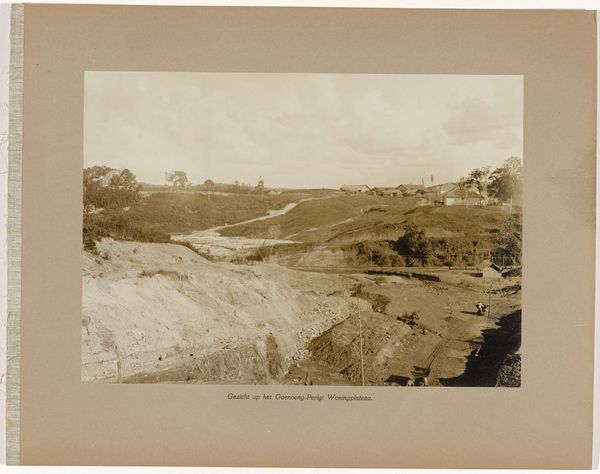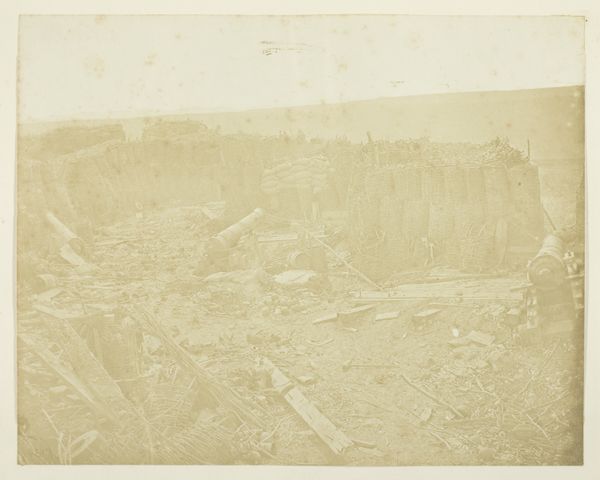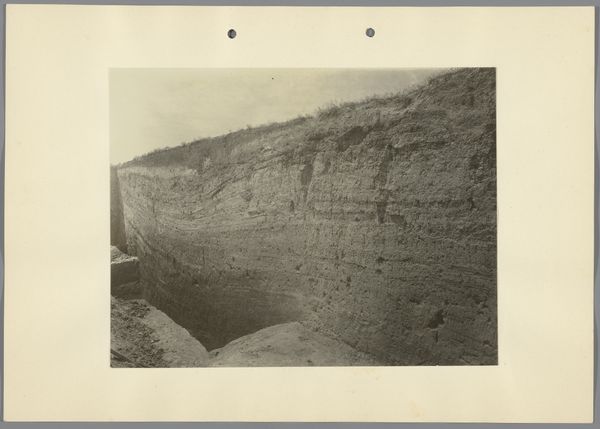
print, photography
# print
#
landscape
#
photography
#
realism
Dimensions: height 279 mm, width 392 mm
Copyright: Rijks Museum: Open Domain
Editor: This fascinating photographic print from 1921-1922, titled 'Dagbouw A1 en A2 Koollagen. Marine Briketkool', captures a landscape drastically altered by industry. The scene has a raw, almost apocalyptic feel. What strikes you most about its depiction of labor and the environment? Curator: It’s important to understand that photographs like this, though seemingly objective, are always shaped by the context in which they're produced and consumed. Think about who commissioned this image and for what purpose. It likely served a particular narrative around resource extraction, progress, and even colonial power. Do you notice how the scale of the mine dwarfs the visible structures, seemingly normalizing such immense environmental alteration? Editor: Yes, absolutely. There’s a certain grandeur, almost romanticism, in the vastness of the open-pit mine, but also a subtle horror in realizing the impact. Was this type of image used to promote industry at the time? Curator: Exactly. Consider how images circulated. They appeared in company reports, technical journals, and perhaps even promotional materials intended to highlight the benefits of resource extraction, downplaying the social and ecological costs. This is part of the politics of imagery - constructing a specific viewpoint on these operations for public consumption. What kind of audience do you think was targeted by these images? Editor: Probably investors, government officials… people who needed to be convinced of the value of these projects. Seeing it this way makes me consider the absence of people actually *working* in the mine. It depersonalizes the labor involved. Curator: Precisely! The emphasis is on the *site*, the supposed "resource," rather than the individuals laboring to extract it. We must analyze these images critically, recognizing them not as neutral documents but as carefully crafted arguments within a broader historical, social, and economic framework. Editor: I see how much richer the interpretation becomes when we consider the institutional and socio-political forces at play. Thanks for providing this fresh perspective! Curator: It’s about seeing beyond the immediate image, and understanding the power dynamics embedded within the representation. Always ask: whose story is being told, and whose is being omitted?
Comments
No comments
Be the first to comment and join the conversation on the ultimate creative platform.
